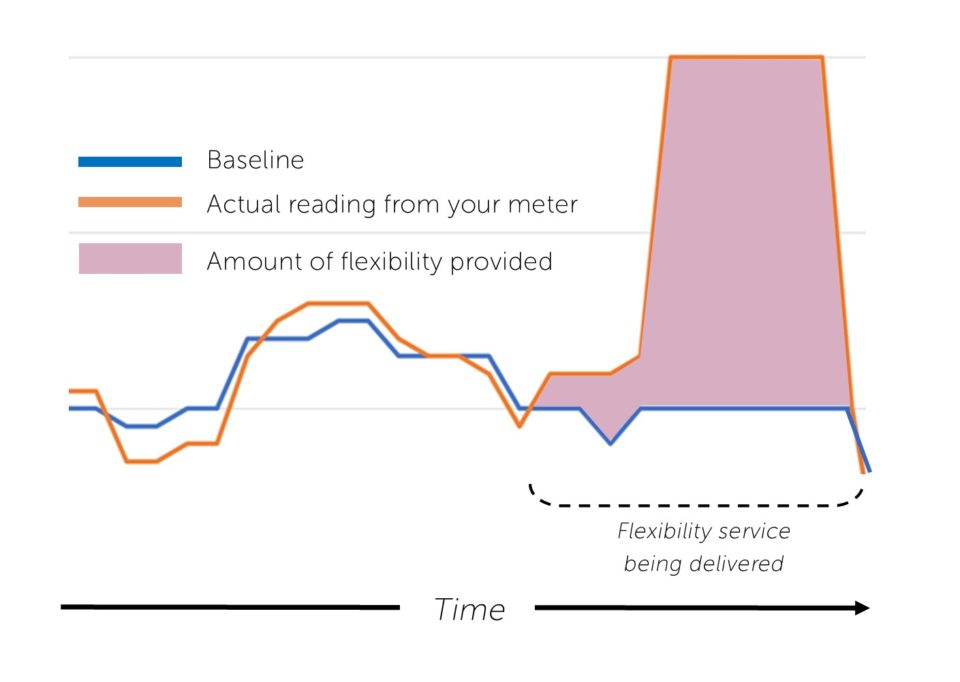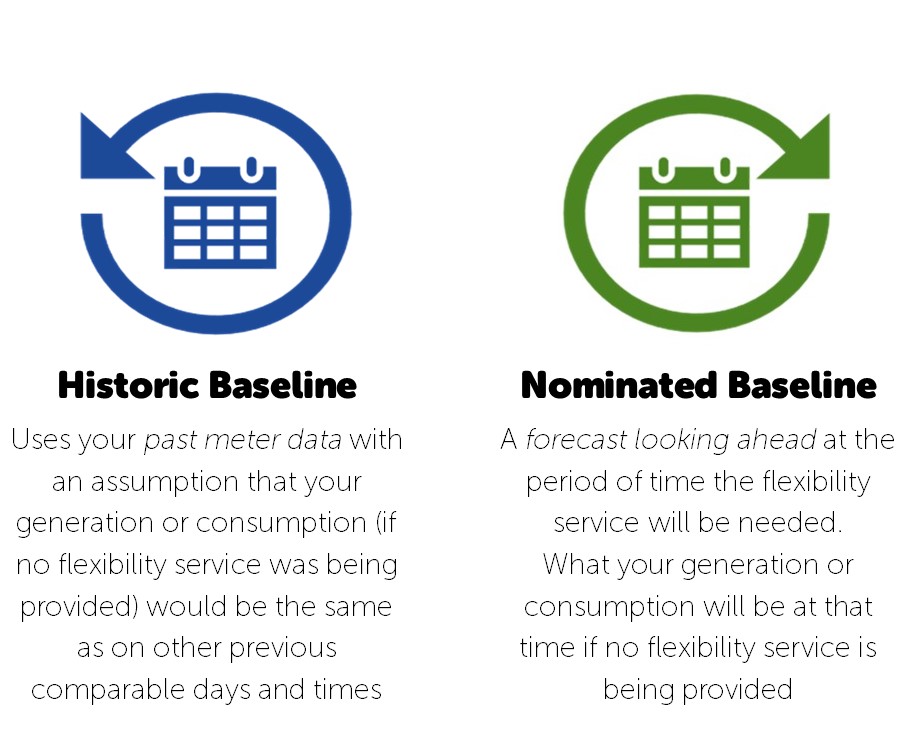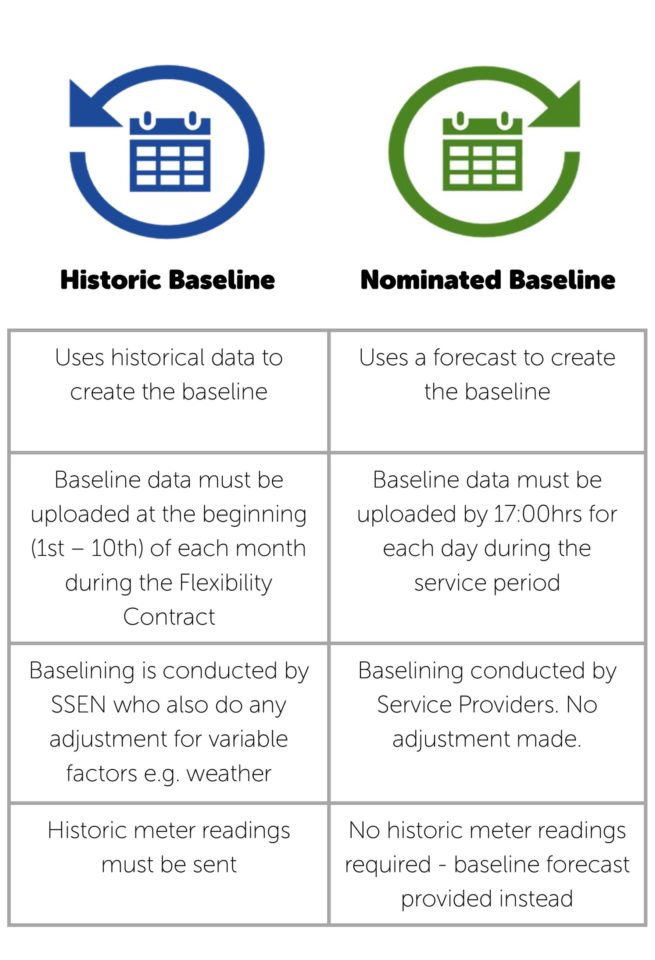Baselining for the trials
Note: As part of the recruitment process for trail participants; TRANSITION developed extensive resources, explaining key concepts of flexibility markets to a wide ranging audience. Our plain English explanations are a great resource for those interested in replicating our trials.
What is a baseline?
Providing flexible energy requires you, following a request, to make a temporary change to the energy you would otherwise be generating or consuming at that time. We have to be able to measure this change to see how much flexible energy has been provided.
We can measure the energy that was being generated or consumed during delivery of a flexibility service by looking at your meter data. But we also need a ‘baseline’ to compare this to, which is what that reading would have been if the service was not being delivered i.e. your usual generation or consumption at that time.
The difference between your baseline and the meter reading is the amount of flexibility that has been provided. This is shown in the graph below.

Two baselining methods
For these trials there are two ways that you can choose from to produce this baseline depending on what suits you best;

There is an option to use both of these methods by providing both your historical data and your forecast. If you do this you will be paid for whichever results in the greater amount of flexibility it is calculated you have delivered.
The Baselining Process
Below are the processes for each of the two baselining options.
- Actions the trial participant needs to take are shown in green
- SSEN’s actions are in blue
Note that if your meter reading is in kWs you will need to provide minute by minute data. For a meter giving kWhs, this can be less than (or equal to) 30 mins. Your forecast/historical and actual meter data will be sent to us using a template form that we will provide you with.
A. Historic Baseline
- At the start of the month (between 1st and 10th) the Participant sends SSEN their meter data. This must be for the eight weeks leading up to the last day of the previous month. So, if you sent your data between 1st and 10th May, this would need to be for the dates of 5th March to 30th April. (If you do not have the 8wks of historic data required then you must use the Nominated Baseline option).
- SSEN uses this data to identify similar days to create the Baseline.
- At the end of the month, after any flexibility has been delivered, the Participant sends SSEN their actual meter data from the periods they provided flexibility. This will be sent on a form that will be provided.
- SSEN compares the meter data with the baseline. It can amend the baseline at this point and use an ‘adjusted baseline‘ if the readings in the 2hrs prior to the flexibility being provided differ from the baseline calculations.
One reason for this could, in the example of PV with a battery, be a significant difference in weather conditions on the day the service is provided. - SSEN then calculates the difference between the actual meter data and the (adjusted) baseline – this equals the amount of flexibility that has been delivered.
B. Nominated Baseline
- The Participant provides a forecast baseline for the period of the service window when the service is to be provided. This must be sent to SSEN by 17:00 on the day before the service is provided.
- At the end of the month, the Participant provides the actual meter data for the period(s) flexibility service were being provided. This is sent on the form provided.
- As this is a forecast, there is no adjustment made to the baseline.
- SSEN then calculates the difference between the actual meter data and the baseline, which equals the amount of flexibility that has been delivered.
Baselining features table
The table below summarises and compares the key features of both baselining options.



